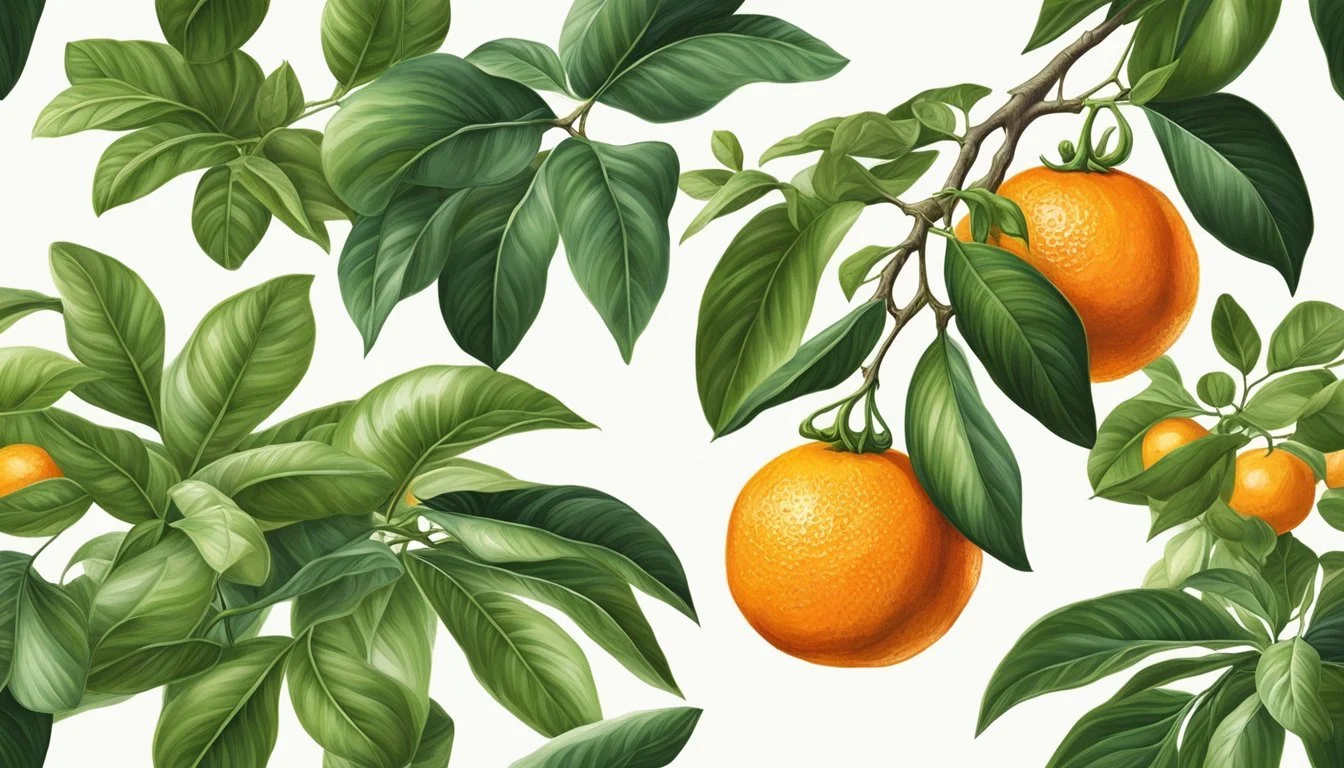How to Tell If a Clementine Is Ripe
Selecting the Sweetest, Juiciest Fruits
Selecting the perfectly ripe clementine can greatly enhance the eating experience of this sweet citrus fruit. A member of the mandarin family, clementines are smaller than traditional oranges and known for their less acidic, sweeter taste. Originating from China, these bright, fragrant fruits have gained popularity worldwide and are a staple in many households, especially during their peak season. Knowing when a clementine has reached its ideal ripeness is essential to enjoy the full range of its juicy, sweet flavor.
Understanding the ripeness of clementines involves a few sensory checks. The ideal clementine is firm, but not hard, and feels heavy for its size, indicating juiciness. The skin should have a certain give when gently pressed but shouldn't feel soft or mushy. A ripe clementine will be bright orange with a glossy sheen and emit a sweet citrus scent. The presence of green hues can indicate under-ripeness, whereas dulled or blemished skin may signal over-ripeness or poor quality. Knowing subtle distinctions can help avoid common pitfalls, ensuring a delightful citrus experience with each fruit.
Key Takeaways
A ripe clementine is firm, heavy for its size, and emits a sweet aroma.
The peak season and proper storage conditions extend the fruit's shelf life.
The nutritional benefits of clementines make them a healthy snack choice.
Identifying Ripeness
When selecting a clementine, it is crucial to assess several sensory aspects to determine its ripeness. The skin color, texture and firmness, overall size and weight, and aroma provide valuable indications of whether the clementine is ready to be eaten.
Skin Color
A ripe clementine will exhibit a bright orange hue, without green patches, indicating it has reached full ripeness. Brown spots on the skin often suggest that the fruit is either overripe or beginning to spoil.
Texture and Firmness
The ideal clementine should feel firm yet give slightly under pressure, which suggests juiciness and peak flavor. The texture of the skin is also telling; a properly ripe clementine will have a slightly oily or waxy feel when rubbed between the fingers.
Fruit Size and Weight
One should look for clementines that feel heavy for their size, a sign they are filled with juice. The fruit should not be overly soft; a firmer texture indicates that the individual clementine holds a generous amount of liquid.
Aroma and Scent
Ripeness can further be determined by the fruit's aroma. A ripe clementine emits a fragrant, citrusy scent that is easily perceptible and pleasant. This aroma should not be overbearing but rather subtle and fresh.
Avoiding Common Pitfalls
When selecting clementines, consumers should be vigilant in identifying any imperfections that may indicate the fruit is not at its peak ripeness or is potentially spoiled. Recognizing signs of blemishes, mold, and unusual texture is vital for choosing the best quality fruit.
Spotting Blemishes and Damage
Blemishes: Carefully inspect the clementine's skin for irregularities. They should look for consistent, bright orange color, smooth texture, and should avoid any fruit with brown spots or large discolorations which often indicate damage beneath the skin.
Damage: Firm pressure should be applied to the skin; it should give slightly but not feel excessively soft or dented, as this could be a sign of underlying damage.
Checking for Mold
Mold and Moldy Spots: Mold often presents as white or green fuzzy spots on the skin of the clementine and indicates spoilage. Consumers should discard such clementines to avoid the spread of mold to other fruit.
Look for:
White fuzzy growth
Green discolored areas
Assessing Soft Spots and Squishiness
Soft Spots: Gently squeeze the clementine. If they encounter a localized soft spot, this may be an indication that the fruit is starting to spoil.
Squishiness: A fresh clementine should feel firm with a slight give. If the fruit feels squishy throughout, it may be overripe or a bad clementine.
It's best to refrain from purchasing clementines with these characteristics to ensure the quality and taste of the fruit are not compromised.
Optimal Storage Conditions
Proper storage of clementines is crucial for maintaining their freshness and flavor. Here are the best practices for temperature, humidity, and light exposure to ensure your clementines stay ripe and juicy.
Temperature and Humidity
Clementines should be stored in a cool, dry place with an optimal temperature range of 45-50 degrees Fahrenheit (7-10 degrees Celsius). They thrive in moderate humidity levels, but excessive moisture can lead to rapid deterioration. If available, place them in the crisper drawer of your refrigerator to manage the humidity effectively.
Using Containers and Refrigeration
When storing clementines in a refrigerator, use containers that allow for airflow to prevent moisture accumulation. Arrange them in a single layer and avoid overcrowding. For those that prefer not to refrigerate, clementines can be kept at room temperature in a well-ventilated container for a few days.
Handling Sunlight Exposure
Clementines are sensitive to light, with prolonged exposure to sunlight or direct sunlight causing them to dry out. Thus, they should be stored in a cool, dark place away from any light source. If you choose to freeze clementines, ensure that their sections are fully frozen before transferring them into airtight freezer bags to prevent freezer burn.
Seasonal and Harvest Considerations
Assessing the right time to harvest clementines is essential for optimal flavor and shelf life. Understanding their seasonal patterns ensures the selection of perfectly ripe clementines.
Peak Harvest Time
Peak harvest time for clementines typically falls during the late fall months. They are part of the mandarin orange family and exhibit the best quality when picked at full ripeness. Fruit ripeness can be gauged by a consistent orange color and a slight give when gently pressed.
Seasonal Availability
Clementines are generally available in winter, aligning with their peak harvest time. Availability may extend from late November until February, offering a sweet citrus option during the colder months when fresh fruit varieties are less abundant.
Nutritional Value and Health Benefits
Clementines are nutrient-dense citrus fruits that provide an array of health benefits. They are particularly high in vitamin C and offer a good dose of fiber, alongside a host of antioxidants.
Vitamin C Content
Clementines are an excellent source of vitamin C, crucial for collagen production, skin health, and the immune system. A single clementine can contain up to 40% of the daily value (DV) of vitamin C, making it a powerful citrus fruit to support overall health.
Fiber and Antioxidants
The fruit also contains dietary fiber that promotes digestive health. Each clementine has approximately 1 gram of fiber, which aids in maintaining regular bowel movements and may contribute to heart health.
Clementines are rich in antioxidants, which include flavonoids that can help protect the body from oxidative stress. Antioxidants found in clementines could potentially have a role in cancer prevention and reducing inflammation. These sweet fruits not only contribute to a person's daily nutritional requirements but also offer delightful taste and various health benefits.
Choosing Clementines at the Store
When selecting clementines, one must focus on two critical areas: assessing the fruit's quality and choosing the best batch available. Each aspect of the selection process ensures that the fruit purchased is ripe and delicious.
Inspecting for Quality
To determine the quality of clementines at the grocery store, one should conduct a thorough inspection. They must:
Look at the skin: Choose clementines with a vibrant orange color, which typically signifies ripeness.
Check for blemishes: The skin should be smooth and unblemished. Any green patches or brown spots can indicate that the fruit is not at its peak freshness.
Feel the texture: A ripe clementine will have soft, slightly yielding skin, but shouldn't be mushy. It should also feel heavy for its size, which is a good indicator of juiciness.
Selecting the Best Batch
When choosing a batch of clementines, shoppers should:
Examine for uniform color: The fruits should have a consistent color free of dull spots.
Avoid damaged fruits: Even if only a few fruits in a crate have blemishes or signs of mold, it can spread to others.
Consider storage: If one plans to store clementines, selecting a batch that’s slightly under-ripe may be wise as they will continue to ripen at home.
By following these steps, buyers can confidently select the finest clementines available in the store.
Enjoying Clementines
Once a clementine is ripe, its sweet taste and easy-to-peel nature make it perfect for fresh consumption and culinary uses. They are known for their juicy segments that can be enjoyed alone or integrated into a variety of dishes.
Ways to Peel and Segment
To peel a clementine, one should gently roll the fruit between their hands to loosen the skin. They can then start at the stem end, using their fingers to gently pull away the thin skin, which usually comes off in large strips. After peeling, the sections naturally separate with minimal effort, making clementines convenient for quick snacking. If one prefers, they can also slice the clementine into wheels to showcase the inner beauty of the fruit's segments, but this method leaves the peel on.
Incorporating into Recipes
Clementines offer a burst of citrus flavor and are versatile ingredients in the kitchen. Here's how one can incorporate clementines into their recipes:
Salads: Add segments of clementines to green salads for a sweet, tangy note.
Desserts: Use the juicy sections or zest to infuse cakes, tarts, and other confections with a bright citrus flavor.
Marinades and Dressings: The juice of a clementine can tenderize proteins and add a vibrant taste to marinades and dressings.
Drinks: Press clementine juice to create refreshing beverages or cocktail mixers.
Clementines can elevate the flavor of dishes with their naturally sweet and tangy juice while also contributing a pleasing aroma and nutritional value. Whether one prefers them as a standalone snack or as a component in more complex recipes, these citrus gems are easy to use and enjoy.
Determining Shelf Life
When assessing the shelf life of clementines, one should look for signs of the fruit aging, such as a loss in flavor and moisture content. A clementine's peak edibility is presented by its vibrant orange color and firm texture. Over time, they may become less flavorful and dried out, reducing their quality.
Shelf Life at Room Temperature
Whole clementines: Typically last up to 7 days.
Signs of aging:
Wrinkled skin
Soft spots
Color changes (e.g., green patches or brown spots)
Shelf Life in Refrigeration
Whole clementines: Can last 2 to 3 weeks.
Preservation tips:
Store in a cool, dry place.
Use a perforated bag for airflow.
The industry's rule of thumb is that clementines maintain their best quality for about 1 to 2 weeks after purchase, provided they've been stored properly.
Shelf Life of Peeled or Sectioned Clementines
Stored in the fridge: The shelf life reduces to 3 to 4 days.
Stored in the freezer: They can last 3 months to a year, based on storage conditions.
For consumers, it's important to regularly check their clementines not just for signs of spoilage but for texture and taste quality. A clementine that appears dried out may still be consumed if it is not spoiled, but the taste experience may not be as pleasant.
It's advised to refrigerate clementines if not consumed within a week of purchase to preserve their freshness and prevent them from becoming older and less flavorful quicker than expected.
Advanced Tips from Gardeners
When assessing clementine maturity, gardeners employ tactile and visual cues. A mature clementine should exhibit a firmness that resists pressure but isn't rock-hard. They avoid fruits that are too soft, as this suggests overripeness.
The skin of the fruit is another indicator. A ripe clementine will have a glossy skin with a vibrant orange hue and should not have any green tints. Gardeners know to be wary of wrinkled skin, which often signals dehydration or a decline in fruit quality.
Visual and Tactile Signs of Ripeness:
Firmness: Should be firm to the touch but give slightly under pressure
Skin Texture: Look for glossy skin without any wrinkles
Color: Expect a consistent and bright orange
Expert gardeners often use a sensory approach when selecting clementines:
Touch: Gently squeeze the clementine; it should feel firm but not hard.
Sight: The skin should be bright orange, without green spots or significant wrinkling.
Smell: A ripe clementine emits a sweet, citrus fragrance.
For those aiming to store clementines, knowing when to pick is crucial. Clementines should be harvested when they are ripe, as they do not continue to ripen once removed from the tree. This preserves their crisp texture and prevents decay. Gardeners typically hand-pick the fruit to minimize damage, twisting the fruit until it snaps off or using pruners to clip the stem carefully.





